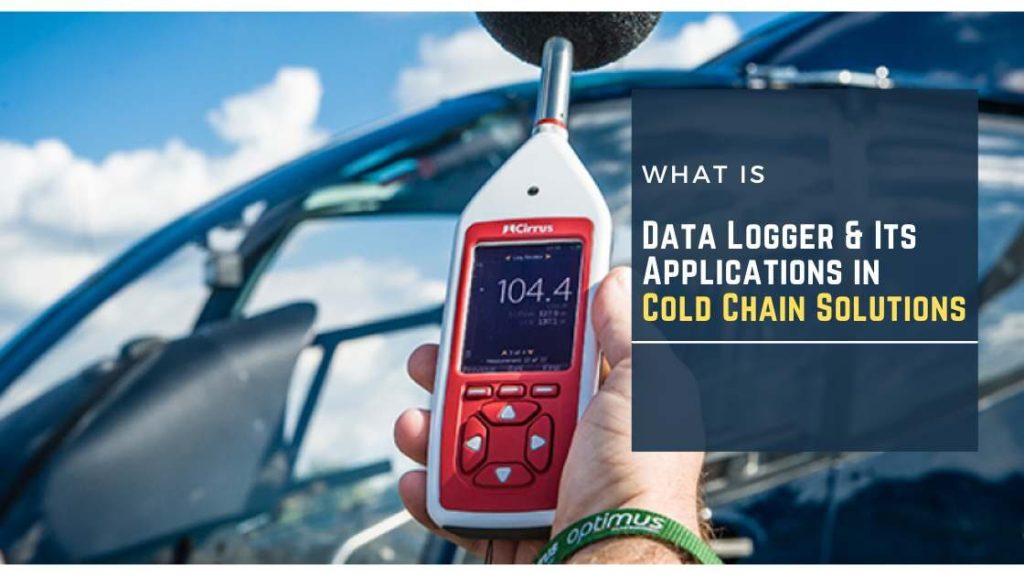Explanation about Data Loggers
The industrial revolution resulted in fast economic growth and an increase in raw material consumption. Concepts such as logistics and supply chain management emerged as a result of the revolution. The globe began to recognize the significance of these concepts in working in international economies.
When these concepts were conceived in the 1950s, the technology available were not as efficient as they are now. As a result, unavoidable error space was left unchecked at the time. Since then, technologies have progressed to assist in reducing the danger of these errors and streamlining the logistics and supply chain procedures for every business. Humidity and temperature monitoring solutions, such as temperature data loggers, are examples of technology developed over time to monitor the crucial conditions of moving assets.
Let’s look at some data from the UNEP Food Waste Index 2021 report, which shows that 931 million tonnes of food waste were produced in 2019 as a result of poor supply chain management and planning methods. Unfavorable temperature conditions that food had been exposed to were one of the key reasons for food waste noted by the report.
A temperature data recorder can assist companies all over the world in understanding the circumstances that their products are subjected to, allowing for a more proactive approach to be established. Let’s keep reading to learn more about temperature data logger devices.

What Is the Definition of a Temperature Data Logger?
A temperature data logger, as the name implies, is a portable device that monitors and records temperature. The next question is whether it can record the temperature of various things and where it can do so.
Any asset, consignment, package, or freight can be tracked and recorded with a temperature data logger device. Data loggers are commonly used for assets such as perishable goods such as fruits and meat products, vaccines, and other items that require a perfectly controlled temperature environment to be preserved.
Data loggers can be useful in logistics and supply chain management since they can provide real-time information on assets while they are in transit or held in cold chain storage facilities.
Why Do You Need A Temperature Data Logger?
When managing large-scale operations, a company’s logistics department faces a variety of obstacles and hazards.
The following are some of the obstacles they may face:
Lack of real-time updates – How is your asset doing while it is in transit?
Tampering cannot be detected – If attempts to open the item were made while it was in transit, no tampering warnings will be issued.
Lack of awareness can lead to increased waste – There are no measures available to reduce perishable item waste in the logistics channel itself.
In the case of vaccines in the pharmaceutical sector, a lack of traceability can make it difficult to determine where products are – whether that is in transit from regional cold chain storage centers to onoculation centers. If conditions are not monitored, the product’s efficacy may suffer, and it may be impossible to pinpoint where the problem occurred during its journey.
With the introduction of new age temperature data logger technologies, these supply chain management challenges can be readily overcome. As previously said, it solves the problem of real-time updates on the status of your shipment, which can be accessed via the web portal, which is always in sync with the data logger device.
The next answer is that temperature data logger devices give SMS, E-mail alerts in general, as well as rapid notifications once conditions are violated or tampering occurs in the package.
It also sends you notifications if there is a sudden big drop in temperature. Because it can have a negative impact on the perishable asset in the package. With this functionality in place, the problem of waste can be readily reduced to the bare minimum provided fast action is taken when alarms are received.
The temperature of the object is recorded digitally.
The temperature data logger, as the name implies, keeps a digital record of the asset’s temperature. This temperature data might be resorted to before employing the asset, as in the case of vaccines, to establish if the optimal temperature was maintained during shipment. This is how remote inoculation centers can determine whether or not to utilize the vaccine.
While the reasons listed above are why a temperature data recorder is needed in the first place, let’s look at how data loggers operate in general and what varieties are available on the market.

